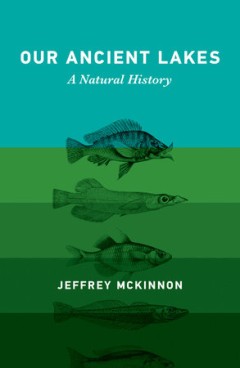Filter by

Expanding Mindscapes: A Global History of Psychedelics
The first collection of its kind to explore the diverse and global history of psychedelics as they appealed to several generations of researchers and thinkers. Expanding Mindscapes offers a fascinatingly fluid and diverse history of psychedelics that stretches around the globe. While much of the literature to date has focused on the history of these drugs in the United States and Canada, edi…
- Edition
- -
- ISBN/ISSN
- 9780262376891
- Collation
- -
- Series Title
- -
- Call Number
- -

More Than a Health Crisis: Securitization and the US Response to the 2013–�…
How the West African Ebola epidemic was transformed from an urgent and distant tragedy into an existential threat to American lives—establishing the dynamics that would later dominate the US response to epidemics such as COVID-19. In 2014 and 2015, the viral Ebola epidemic in West Africa inspired breathless US media coverage and became the subject of heated public debate over just how to u…
- Edition
- -
- ISBN/ISSN
- 9780262374859
- Collation
- -
- Series Title
- -
- Call Number
- -

Our Ancient Lakes: A Natural History
The unexpected diversity, beauty, and strangeness of life in ancient lakes—some millions of years old—and the remarkable insights the lakes are yielding about the causes of biodiversity. Most lakes are less than 10,000 years old and short-lived, but there is a much smaller number of ancient lakes, tectonic in origin and often millions of years old, that are scattered across every contine…
- Edition
- -
- ISBN/ISSN
- 9780262373524
- Collation
- -
- Series Title
- -
- Call Number
- -

Vienna Series In Theoretical Biology: Properties of Life: Toward a Theory of …
A coherent and comprehensive theory of life that synthesizes the specific properties of living organisms. Despite continued advances, science has until now struggled to describe the specific properties that define a living being. By synthesizing several aspects of organismic biology and contemporary science, Properties of Life by Bernd Rosslenbroich generates a coherent concept of the singul…
- Edition
- -
- ISBN/ISSN
- 9780262375399
- Collation
- -
- Series Title
- -
- Call Number
- -

Vienna Series In Theoretical Biology: Evolution "On Purpose": Teleonomy in Li…
A unique exploration of teleonomy—also known as “evolved purposiveness”—as a major influence in evolution by a broad range of specialists in biology and the philosophy of science. The evolved purposiveness of living systems, termed “teleonomy” by chronobiologist Colin Pittendrigh, has been both a major outcome and causal factor in the history of life on Earth. Many theorists have…
- Edition
- -
- ISBN/ISSN
- 9780262376013
- Collation
- -
- Series Title
- -
- Call Number
- -

Culture And Psychiatry: Families on the Edge: Experiences of Homelessness and…
An intimate account of rural New England families living on the edge of homelessness, as well as the practices and policies of care that fail them. Families on the Edge is an ethnographic portrait of families in rural and small-town New England who are often undercut by the very systems that are set up to help them. In this book, author and medical anthropologist Elizabeth Carpenter-Song dra…
- Edition
- -
- ISBN/ISSN
- 9780262375320
- Collation
- -
- Series Title
- -
- Call Number
- -

Evolvability: A Unifying Concept in Evolutionary Biology?
Essays on evolvability from the perspectives of quantitative and population genetics, evolutionary developmental biology, systems biology, macroevolution, and the philosophy of science. Evolvability—the capability of organisms to evolve—wasn't recognized as a fundamental concept in evolutionary theory until 1990. Though there is still some debate as to whether it represents a truly new c…
- Edition
- -
- ISBN/ISSN
- 9780262374699
- Collation
- -
- Series Title
- -
- Call Number
- -

War on All Fronts: A Theory of Health Security Justice
An argument for the centrality of rights in health security, and how to apply ethical principles to protecting those rights during public health crises. In recent years, efforts to respond to infectious diseases have been described in terms of national and global security, leading to the formation of the field of “health security.” In War on All Fronts, Nicholas G. Evans provides a novel…
- Edition
- -
- ISBN/ISSN
- 9780262374224
- Collation
- -
- Series Title
- -
- Call Number
- -

Waiting to Inhale: Cannabis Legalization and the Fight for Racial Justice
The roots of a racial reckoning through the lens of cannabis. From the start, the War on Drugs targeted Black, Brown, and Indigenous Americans already disadvantaged by a system stacked against them. Even now, as white Americans who largely escaped the fire capitalize on the legalization movement and a booming cannabis industry, their less fortunate peers continue to suffer the consequences of …
- Edition
- -
- ISBN/ISSN
- 9780262373128
- Collation
- -
- Series Title
- -
- Call Number
- -

Ending Epidemics: A History of Escape from Contagion
How scientists saved humanity from the deadliest infectious diseases—and what we can do to prepare ourselves for future epidemics. After the unprecedented events of the COVID-19 pandemic, it may be hard to imagine a time not so long ago when deadly diseases were a routine part of life. It is harder still to fathom that the best medical thinking at that time blamed these diseases on noxious…
- Edition
- -
- ISBN/ISSN
- 9780262373869
- Collation
- -
- Series Title
- -
- Call Number
- -
 Computer Science, Information & General Works
Computer Science, Information & General Works  Philosophy & Psychology
Philosophy & Psychology  Religion
Religion  Social Sciences
Social Sciences  Language
Language  Pure Science
Pure Science  Applied Sciences
Applied Sciences  Art & Recreation
Art & Recreation  Literature
Literature  History & Geography
History & Geography